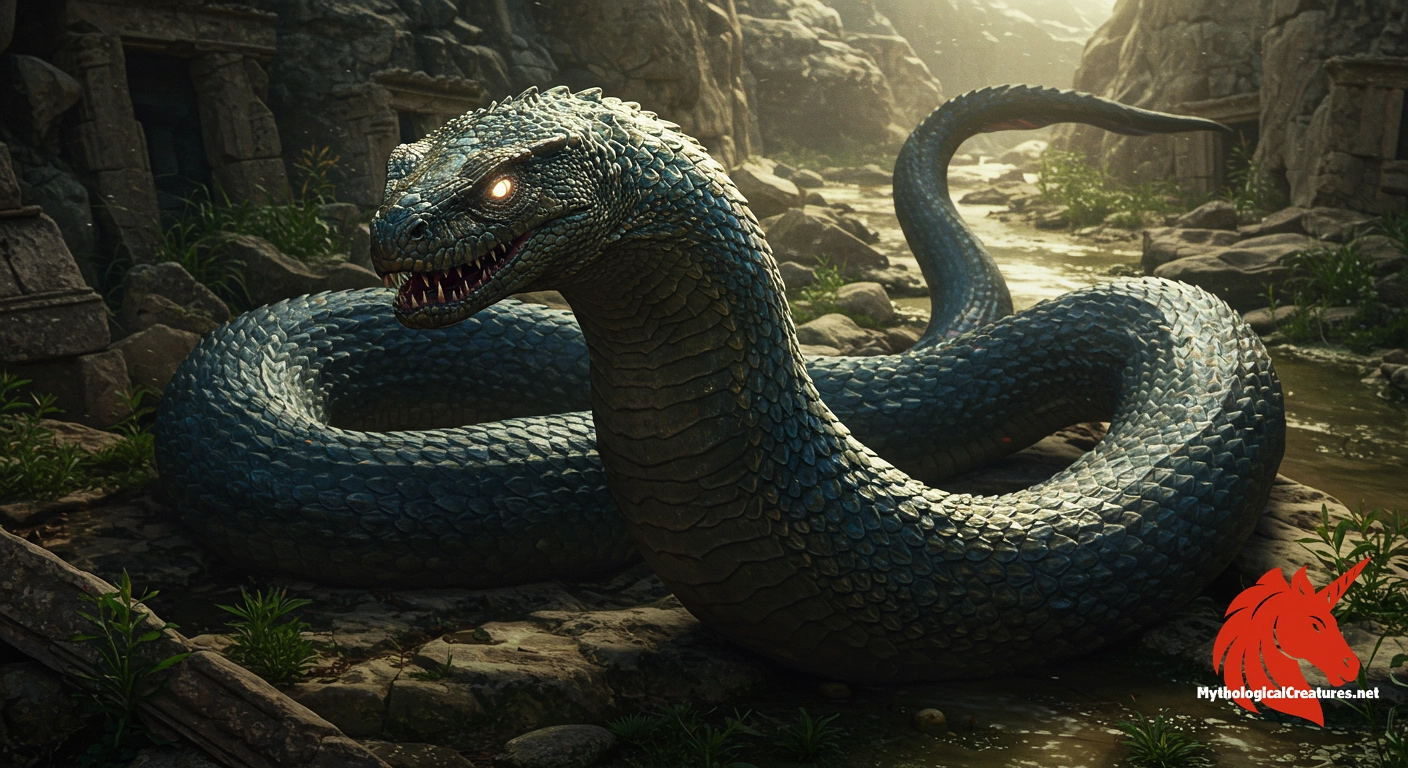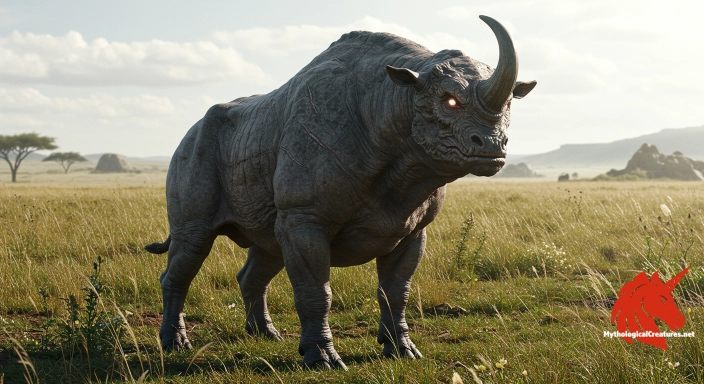Illuyanka: Illuyanka is a serpentine dragon from Hittite mythology.

Illuyanka
Illuyanka - Embodies chaos and natural forces in opposition to the storm god’s order, reflecting deep cultural themes in ancient Anatolia.
Origins & First Encounters
Illuyanka stands as one of the most formidable figures in Hittite myth, a serpentine dragon whose legend embodies the eternal struggle between order and chaotic nature. Born from the ancient traditions of Anatolia, this mythic creature was central to sacred rituals, especially during the springtime celebrations of Puruli. Its origins, though shrouded in the mists of prehistory, are attested in texts discovered at the once-glorious Hattusa, the heart of Hittite civilisation. The myth vividly recounts a cosmic confrontation, as Illuyanka battles the storm god Tarḫunz, whose role is emblematic of the life-giving yet overwhelming force of the skies. This epic narrative reflects the Hittites’ deep engagement with the cycles of nature and divine intervention. Illuyanka’s role in these ancient stories captured the imagination of those who saw in its defeat a symbolic renewal of order after chaos. There is a palpable tension woven through the narrative that speaks to both the awe and fear inspired by the forces of nature. The myth continues to intrigue modern audiences, standing as a testament to the rich cultural heritage of the ancient Near East. Its legacy endures as a symbol of the struggle to impose harmony on the unruly elements of the natural world.
Source Texts & Tale Variants
The primordial battle involving Illuyanka finds its source in a collection of Hittite cuneiform tablets, among which Catalogue des Textes Hittites 321 holds particular prominence. These tablets provide us with two consecutive versions of the myth, each adding distinct layers of meaning to the creature’s portrayal. In one retelling, Illuyanka looms as the embodiment of untamed chaos, while the other emphasises a structured ritual victory that underscores the renewal of cosmic order. Discovered at Çorum-Boğazkoyu—ancient Hattusa—the documents illuminate the deep ritualistic and cultural significance that this myth held among the Hittites. The textual variants not only highlight different narrative techniques but also signal the possibility of an evolving oral tradition that adapted over time. Each version contributes unique details that shed light on how the ancient people perceived the forces of nature and divine power. The persistence of this tale within multiple sources testifies to its central role in religious ceremonies and seasonal festivals. Even with the fragmentation of some texts, the composite picture offers a fascinating insight into the interplay between myth, ritual, and historical context.
Form & Powers
Illuyanka is depicted as an immense and formidable serpentine dragon, its body described with an extraordinary sinuous elegance and a sense of overwhelming presence. Ancient imagery intimates that the creature was adorned with scales that shimmered with a mysterious, almost supernatural, luster. Its elongated form, coiled and undulating, evokes a visual impression of unbridled natural power, which both captivates and terrifies the observer. The creature’s head is often rendered as fearsome, complete with piercing eyes and a maelstrom of fanged jaws that suggest an ancient, predatory intelligence. Some portrayals hint at additional features such as horns or spiked projections, which enhance its demonic visage. Variations in the myth sometimes allow for differences in size, with accounts presenting Illuyanka as large enough to dwarf human figures or even divine entities. The sinuous tail, frequently embellishing its overall form, is imbued with symbolic potency, representing the endless cycle of seasonal change and cosmic renewal. Overall, the striking physical attributes of Illuyanka serve as a powerful icon of the untamed forces dwelling at the heart of the natural world.
Regional Faces
Although Illuyanka arises from the core of Hittite myth, its influence and variations extend across a broad regional spectrum within ancient Anatolia and nearby cultures. In some local traditions, the dragon is interwoven with other mythic figures, blending seamlessly into the regional tapestry of deities and spirits. Variations in its portrayal have been influenced by neighbouring Hurrian motifs, where the conflict between celestial order and primal chaos is a common theme. Within these regional adaptations, Illuyanka sometimes transforms into a symbol associated with the seasonal transitions and the fertility of the land. Localised narratives often re-imagine the creature’s battle with the storm god in ways that accentuate specific cultural rituals and agricultural cycles. These regional retellings reveal not only the mutable nature of myth but also demonstrate how a singular figure can adopt multiple roles based on local customs and worldviews. The creature’s diverse imagery in different regions underscores a shared mythological ancestry, even as each culture imbues it with its unique flavour. This adaptability speaks volumes about the dynamic interplay between myth and the local traditions that seek to explain and celebrate the mysteries of the natural order.
Cultural Parallels
Illuyanka’s legacy finds a natural parallel in a wide array of global mythologies that portray serpent-like adversaries as embodiments of primordial chaos. Its epic struggle with a storm god is reminiscent of the Babylonian conflict with Tiamat, where the forces of chaos encounter divine order. Similar themes appear in Egyptian myths through the relentless battle against the chaos serpent Apep, whose defeat is vital for maintaining cosmic balance. Greek mythology, with its mythic Hydra and other serpentine monsters, also finds common ground in the struggle against formidable, multi-headed foes that threaten the order of the cosmos. These shared narratives underscore a universal motif: the heroic conquest of chaos by a divine force, symbolising the triumph of order over entropy. The comparative analysis highlights a recurring pattern in which snakes and dragons serve as the primary symbols of the untameable and unknown. This cross-cultural resonance not only enriches our understanding of Illuyanka but also situates it within a broader context of mythological archetypes that span continents and ages. In every iteration, the narrative of the divine confrontation with the serpent reveals a deep and abiding concern with the forces that shape both the cosmos and the human experience.
Legacy & Modern Evolution
The myth of Illuyanka has traversed vast temporal and cultural chasms, evolving from a fragmentary Hittite legend into a lasting symbol in modern myth-making. Initially rooted in the ritualistic and religious practices of ancient Anatolia, the creature’s story has been transmitted and transformed over centuries, influencing later depictions of dragons and serpentine monsters. Over time, its narrative has been reinterpreted in literature, art, and even popular media, where it often stands as a metaphor for the eternal battle between the forces of nature and civilisation. Contemporary adaptations draw not only on the raw power of the myth but also on its themes of cyclic renewal and the subjugation of chaos. The enduring appeal of Illuyanka is evident in modern fantasy works that celebrate its ominous imagery and symbolic depth. Its evolution mirrors the way ancient myths adapt to new cultural contexts, resonating with modern audiences familiar with the archetypal struggle between order and chaos. Artists and storytellers continue to find inspiration in Illuyanka’s formidable presence, reimagining its legend to reflect current environmental and existential challenges. This dynamic transformation reinforces Illuyanka’s status as a timeless icon, bridging ancient myth with modern creative expression.
Interesting Fact
Illuyanka's myth exists in multiple versions, highlighting its enduring significance in ritual practices and its multifaceted portrayal in Hittite literature.
Quick Creature Info
Origin:
Associations:
Our Mythic Legendary Rating:

Habitat:
Supernatural Powers:
Physical Attributes:
Abilities:
Behavior:
Lore:
References
Discover Another Mythical Legend You May Not Have Heard Of?
Uncover the mysteries of ancient folklore and expand your knowledge of legendary beings from cultures around the world.
Dare to Meet the Karkadann....
Curated by the Mythological Creatures Team (rev. May 2025)
